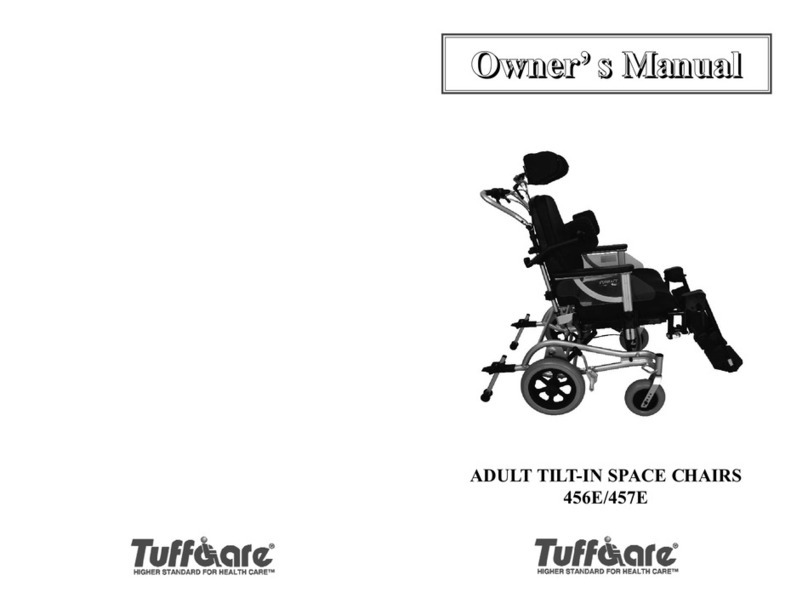- 7 -
L WEIGHT LIMIT
DO NOT exceed maximum weight limit of the patient
lifter. The weight limit for the stand up patient lifter is
350lbs.
L ASSEMBLING THE LIFTER
DO NOT over-tighten mounting hardware. It will cause
damage to the mounting brackets.
L USING THE SLING
Before attaching the sling onto the attachment holders
on the lift arm, lift the hanging straps up to predetermine
which color coded hanging points to use in order to
avoid the sides of the sling riding up to the underarm
causing patient discomfort.
Be sure that sling is properly attached on sling holders
before the patient is removed from a bed, chair, or any
objects.
If the patient is in a wheelchair, secure the wheel locks
in place to prevent the chair from moving forwards or
backwards.
L OPERATING THE LIFTER
Prior to first use, make sure that battery is being fully
charged. Always use the handles to move the lifter.
L LIFTING THE PATIENT
Adjustments for safety and comfort should be made
before moving the patient. Patient’s arms should be
outside of the sling straps.
Before lifting a patient from a wheelchair, bed or any
objects, slightly raise the patient off the object and
check that sling attachments are secured.
During transfer, with the patient suspended in a sling
attached to the lifter, DO NOT roll the base over uneven
surfaces that would create an imbalance of the patient
lifter and could cause the patient lifter to tip over. Use
handle on the mast at all times to move the patient lifter.
- 8 -
TUFFCARE suggests locking the rear casters ONLY
when positioning or removing the sling (stand up or
transfer) from around the patient.
TUFFCARE DOES NOT suggest locking the rear casters
of the patient lifter when lifting a patient. When lift arm
rises the center of gravity will shift and caster wheels
will slightly move to balance the weight of the patient.
Locking the rear casters could cause the lifter to tip
over and endanger the patient and assistants.
L TRANSFERRING THE PATIENT
Before transferring, check that the lifter’s weight capacity
can withstand the patient’s weight.
Wheelchair wheel locks MUST be in a locked position
before lowering the patient into the wheelchair for
transport.
L PERFORMING MAINTENANCE
Regular maintenance of patient lifter and accessories is
required to assure proper operation.
Casters and axle bolts are also required to be checked
for tightness.
DO NOT over-tighten mounting hardware. It will cause
damage to the mounting brackets.
NOTE: See detail at Section 6 for maintenance.
L PINCH POINTS
Pinch points exist at base of lifter. Use caution, otherwise
injury could occur.































